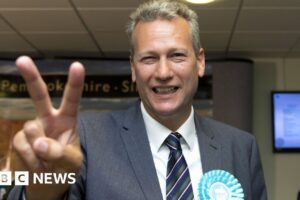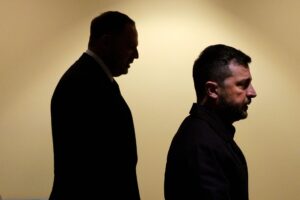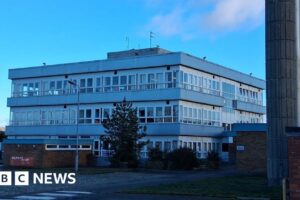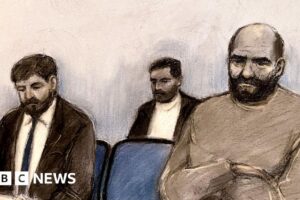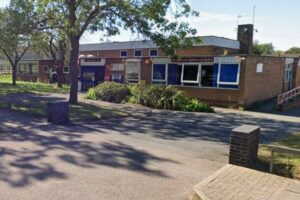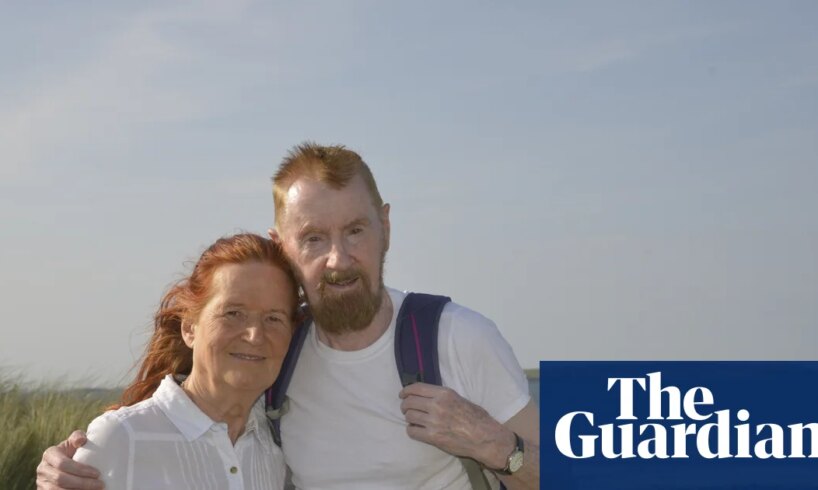
When police thundered into their London home in 1996 and arrested Michael Gallagher on suspicion of IRA activity, Margaret Attenborough was shocked and indignant.
She was an English academic who wrote books on geophysical software and her Scottish partner was a former civil servant who helped homeless alcoholics. The idea of him as an IRA man seemed ludicrous. Gallagher was romantic and cerebral – he had wowed Attenborough by completing the Guardian’s cryptic crossword in three minutes.
Yet he was charged with helping the IRA to launch mortars at Heathrow in 1994, attacks that inflicted no casualties but caused huge disruption. Attenborough mustered funds and support to proclaim her boyfriend’s innocence but Gallagher was convicted of conspiring to cause explosions and sentenced to 20 years in prison.
Mary Attenborough circa 1990. Photograph: Mary Attenborough
Now, almost three decades later, the two are still a couple and have co-written a book that confirms Gallagher was, in fact, guilty – that he was an IRA fixer who facilitated multiple operations, including the Heathrow attack.
He had concealed the truth from Attenborough and confessed to her only after his conviction, leaving her stunned. “Other than a handful of people, I didn’t really tell anybody,” she said this week. “It wasn’t something I was that proud of because he had lied to me.”
Attenborough and Gallagher have parted the veils on that deception, and their relationship, in a joint memoir, Unbroken: Secrets, Lies and Enduring Love.
“There was certainly a hint that Mary somehow might have known or at least had a good idea of what I was up to and that just wasn’t the case at all,” said Gallagher. “I wanted to get that out there.”
After Gallagher was released under the terms of the 1998 Good Friday agreement, the couple moved to rural County Donegal and set up a web development business, which they still run.
The book has now turned a spotlight on their past. Gallagher, 82, wanted to set the record straight about his guilt and that Attenborough had initially believed in his innocence.
For her part, the former maths lecturer, who is 71, wanted to explain why she forgave the deception. “I know Michael isn’t a terrible person, he’s a very good person,” she said. “He just didn’t put me first, and I don’t know whether I see that as betrayal. He didn’t intend it.”
They met in 1985 through groups that supported Britain’s striking coal miners and protested against South Africa’s apartheid. Attenborough, from Walsall, near Birmingham, had a doctorate in mathematical physics from Imperial College London. Gallagher, from Glasgow, was an aspiring writer and recovering alcoholic.
Attenborough and Gallagher celebrate his release from prison in 1998. Photograph: Mary Attenborough and Michael Gallagher
He had Northern Irish roots and did occasional jobs for the IRA, sorting out accommodation, transport and documents for IRA members in England. Gallagher concealed his activities from Attenborough, who supported Irish unification but opposed IRA methods. “I’d made a commitment to the IRA and a commitment to Mary and I thought I was getting away with it – that I was able to do both,” he said.
The mortars that landed on Heathrow in March 1994 were not armed to explode – they were symbolic attacks timed to coincide with parliament’s renewal of the Prevention of Terrorism Act, said Gallagher.
Security forces identified him as the suspect who visited a warehouse with traces of explosives, put him under surveillance and bugged the couple’s home for almost two years, culminating in the pre-dawn raid at their Earl’s Court home on 28 October 1996.
Attenborough rallied support, and funds from family for bail, to avert a presumed Guildford Four-style miscarriage of justice.
A burned out Nissan car, which had been used to launch the mortars. Photograph: PA
For 16 months – during her prison visits and the trial in February 1998 – Gallagher kept his secret. “There was no way I could tell her because had I told her then, she would have been obliged to tell my sister, her brother and anybody else: ‘Don’t bother looking for sureties for Michael because he’s guilty,’” he said. “It was really an awful time. She’d come and talk about all the people who were campaigning for my innocence, saying they were so sorry about me, ‘poor Michael’.”
The possibility of escaping conviction, however, sustained his fiction until the jury decided against him. Days later, when Attenborough visited to tell him about plans for an appeal, he confided his guilt.
The memoir Unbroken.
“At first, I didn’t even know whether to believe him,” she recalled. “I thought, well, which version of the truth should I accept here?” Distraught, she considered ending the relationship, but in subsequent visits she accepted Gallagher’s apologies and rationalised his clandestine activities. “Obviously I didn’t agree with this involvement with the IRA. But on the other hand, it wasn’t that big a role that he was playing.”
Anti-terrorist police say fixers play crucial roles in facilitating murderous attacks but Attenborough said IRA members believed in a cause. “I think their tactics were wrong but I don’t regard them as terrible people.”
The memoir alternates perspectives between the two narrators and cloaks Gallagher’s guilt until his conviction – a delayed reveal the authors said they modelled on Gillian Flynn’s novel Gone Girl.
During the writing, Gallagher disclosed another decades-old secret to his partner: when he speedily completed the crossword in her copy of the Guardian he had already done it earlier, in his own copy.
